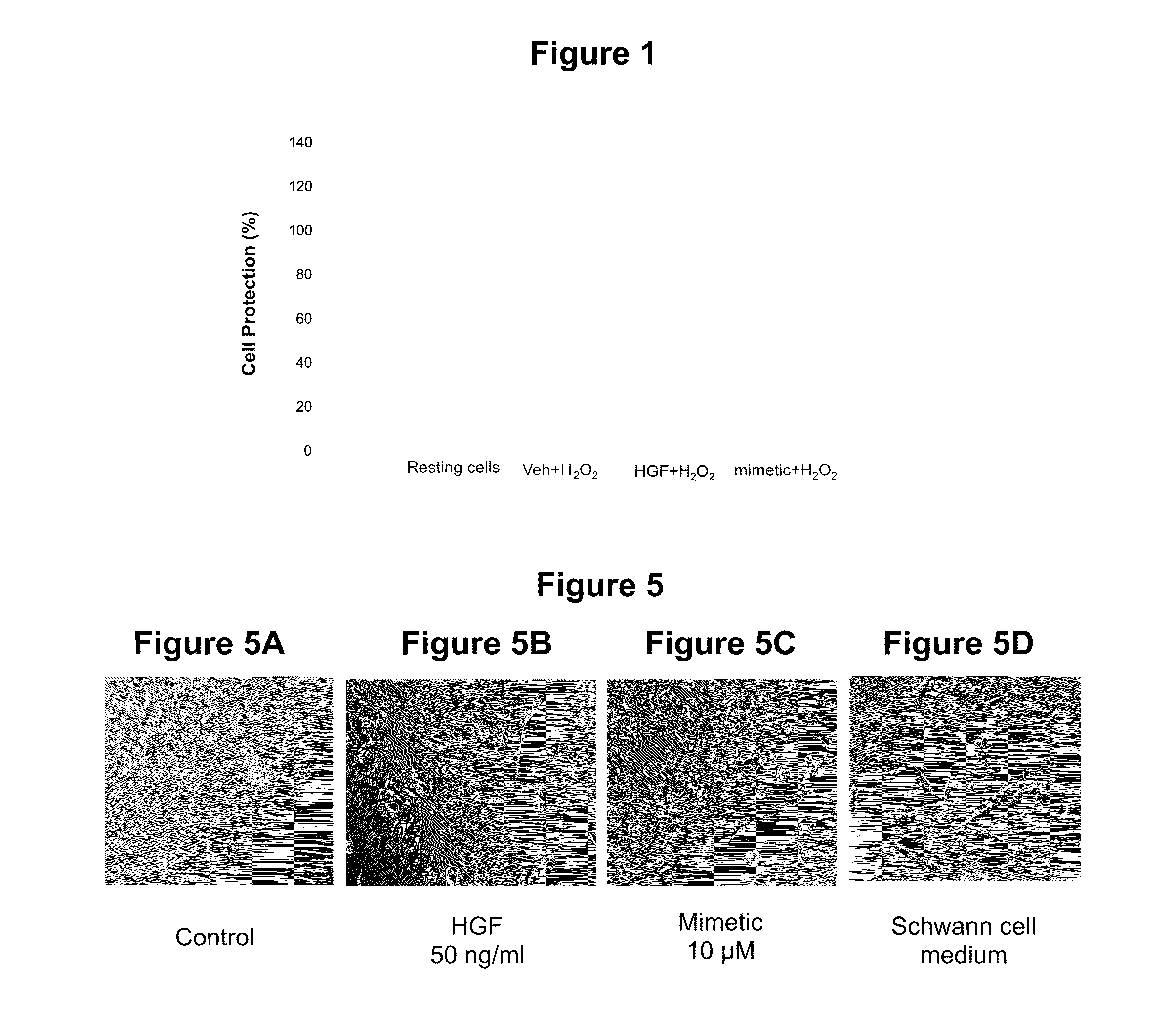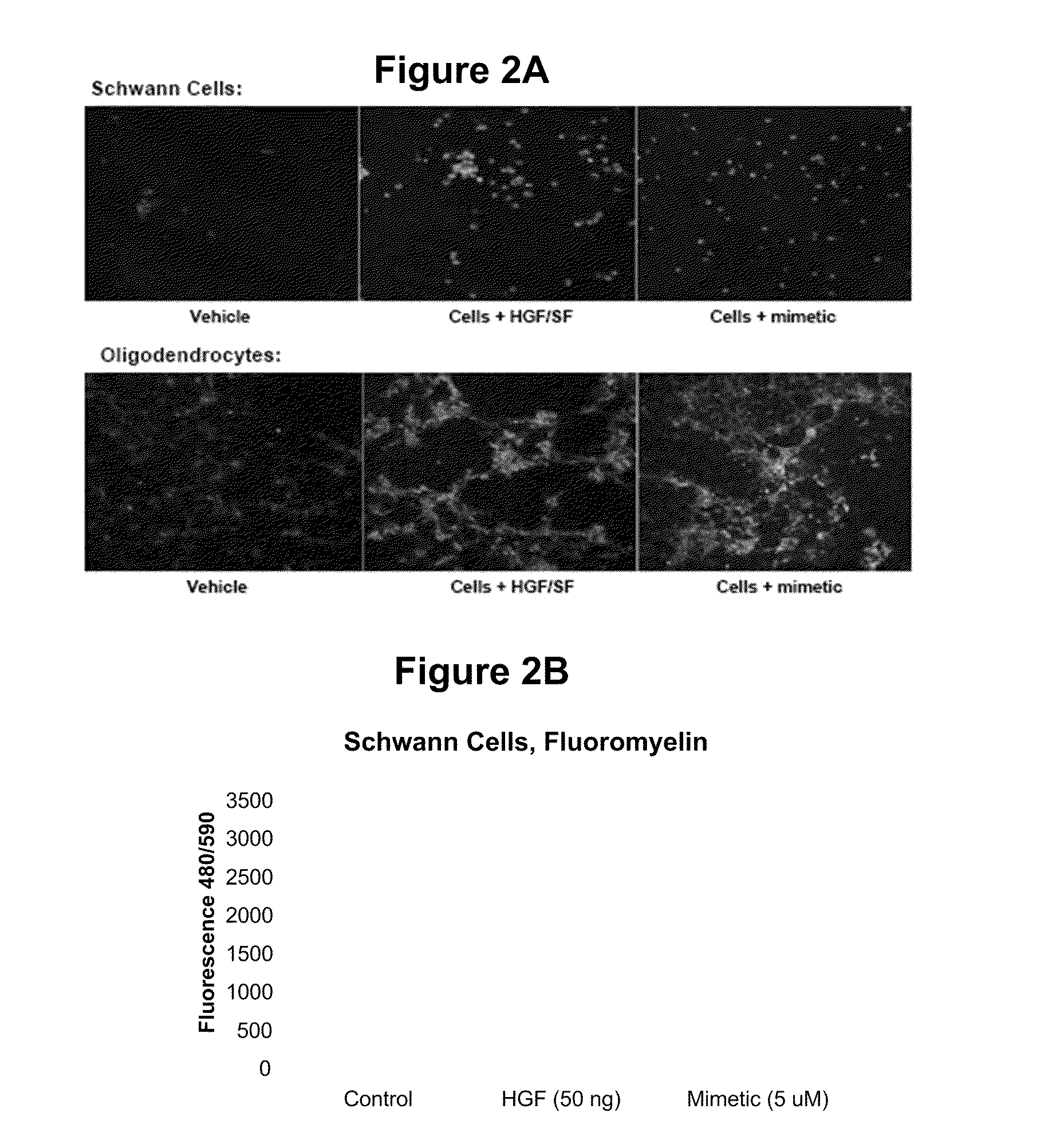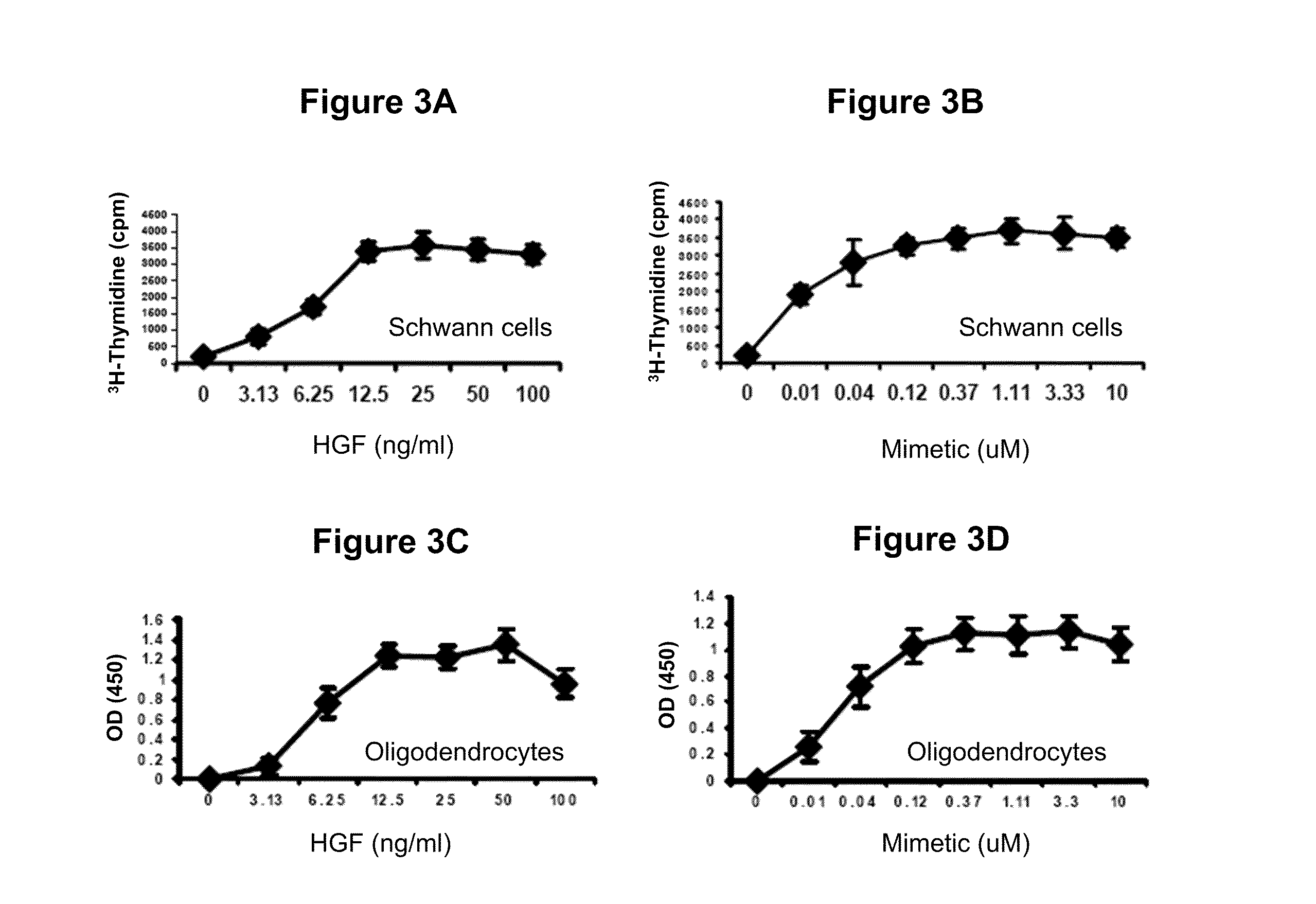Hepatocyte growth factor pathway activators in demyelinating diseases and central nervous system trauma
a technology of demyelinating diseases and activated hepatocyte growth factor, which is applied in the direction of peptides/proteins, drug compositions, peptides, etc., can solve the problems of limited or inexistent effective treatment, toxic buildup of chemical substances, permanent and often devastating neurologic deficits, etc., and achieve the effect of treatment and prophylaxis
- Summary
- Abstract
- Description
- Claims
- Application Information
AI Technical Summary
Benefits of technology
Problems solved by technology
Method used
Image
Examples
example 1
[0364]HGF and small molecule HGF / SF mimetic protect Schwann cells against H2O2-induced apoptosis. Schwann cells were seeded in 96 well plates at a density of 5000 cells / well, overnight in serum-free media. Cells were treated with 0.5 mM H2O2 for 2 hours in the presence of vehicle (Veh), HGF (50 ng / ml) or HGF / SF mimetic (10 micromolar). Cells were assayed for apoptosis using the Apo-ONE Assay kit (Promega). As seen in FIG. 1, treatment with H2O2 reduced cell viability to ˜5% of baseline in the vehicle group. By contrast, treatment with HGF or a small molecule mimetic was associated with a substantial improvement in cell viability.
example 2
[0365]HGF / SF and small molecule HGF / SF mimetic increase myelin production in Schwann cells. It is well-known that the primary function of oligodendrocytes and Schwann cells is myelin production. In a further experiment, HGF / SF and a small molecule mimetic were shown to induce myelin production in oligodendrocytes and Schwann cells, a finding with important therapeutic implications for spinal cord injury (SCI). Cells were seeded in 3 well chamber slides at a density of 50,000 cells / well in serum free media for 24 hours. Then HGF / SF (50 ng / ml) or a small molecule HGF / SF mimetic (5 μM) were added to the same medium and cells incubated for an additional 4 hours. Cells were washed, and fluoromyelin (Molecular Probes) was added to each well (30 min exposure at room temperature), and cells observed under a confocal microscope (Olympus). As seen in FIG. 2A, treatment of cells with HGF or mimetic produced an intense increase in the fluoromyelin signal. To obtain semi-quantitative measurement...
example 3
[0366]Small molecule HGF / SF agonist mimics HGF / SF's pro-proliferative effects. Oligodendrocytes and Schwann cells are both cells that support neuronal function by ensheathing neuronal axons with myelin. An individual supporting cell comprises a single segment of an axon's myelin sheath and is active in facilitating axonal growth. An important aspect of HGF / SF activity is this growth factor's ability to induce oligodendrocyte and Schwann cell proliferation. In order to evaluate small molecule HGF / SF mimetics for potential HGF / SF-like bioactivity, rat RSC96 Schwann cells (ATCC, Manassas, Va.) or mouse primary oligodendrocytes (Celprogen, San Pedro, Calif.) were seeded in 96-well plates at 5000 cells / well in serum-free medium for 16 hours. Cells were treated with test compound or HGF / SF (positive control) for 16-24 hours. [3H]-thymidine was added to the medium with Schwann cells, WST1 cell proliferation reagent (Roche, Indianapolis, Ind.) was added to oligodendrocytes, and incubation w...
PUM
| Property | Measurement | Unit |
|---|---|---|
| Structure | aaaaa | aaaaa |
Abstract
Description
Claims
Application Information
 Login to View More
Login to View More - R&D
- Intellectual Property
- Life Sciences
- Materials
- Tech Scout
- Unparalleled Data Quality
- Higher Quality Content
- 60% Fewer Hallucinations
Browse by: Latest US Patents, China's latest patents, Technical Efficacy Thesaurus, Application Domain, Technology Topic, Popular Technical Reports.
© 2025 PatSnap. All rights reserved.Legal|Privacy policy|Modern Slavery Act Transparency Statement|Sitemap|About US| Contact US: help@patsnap.com



